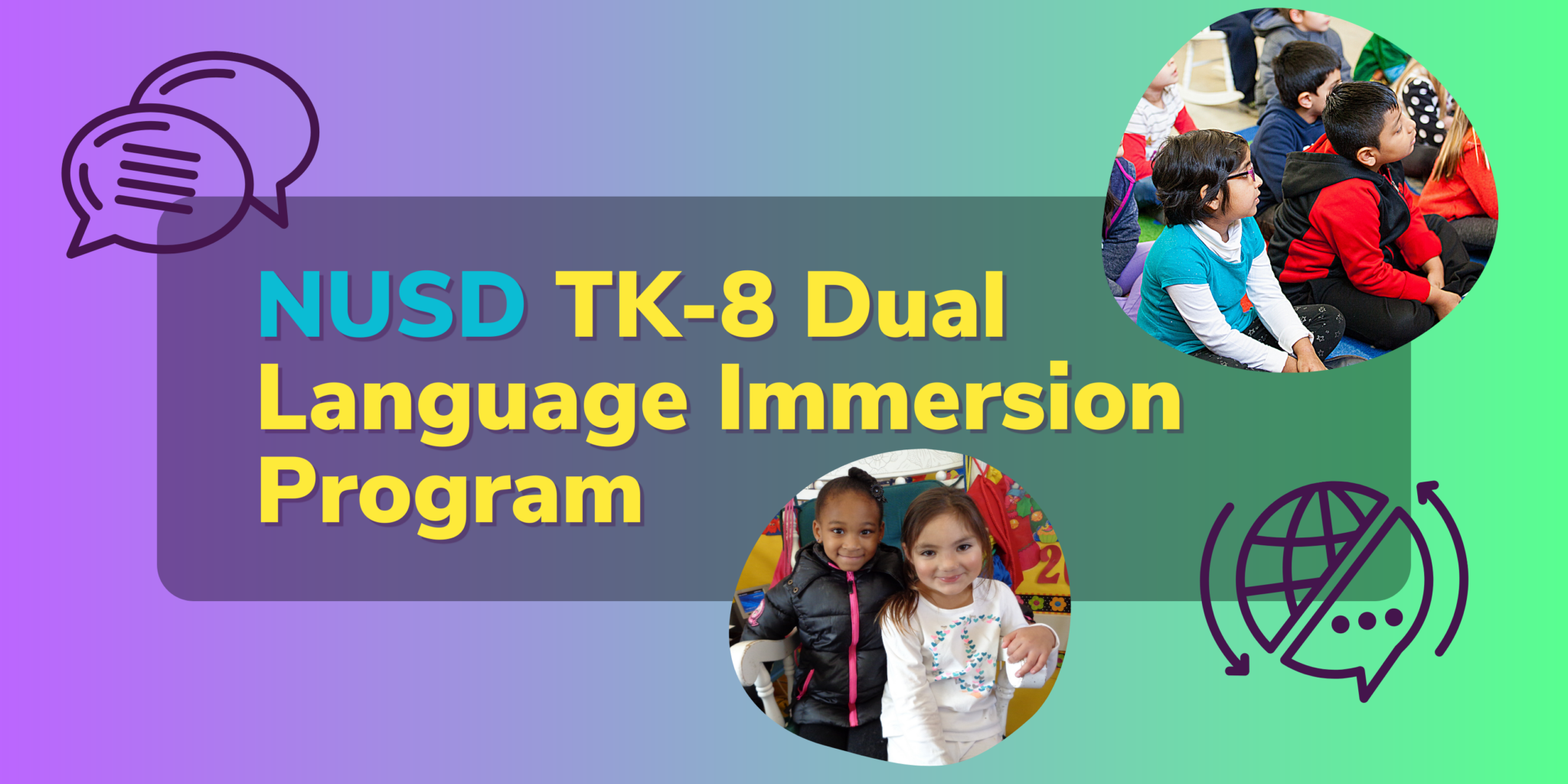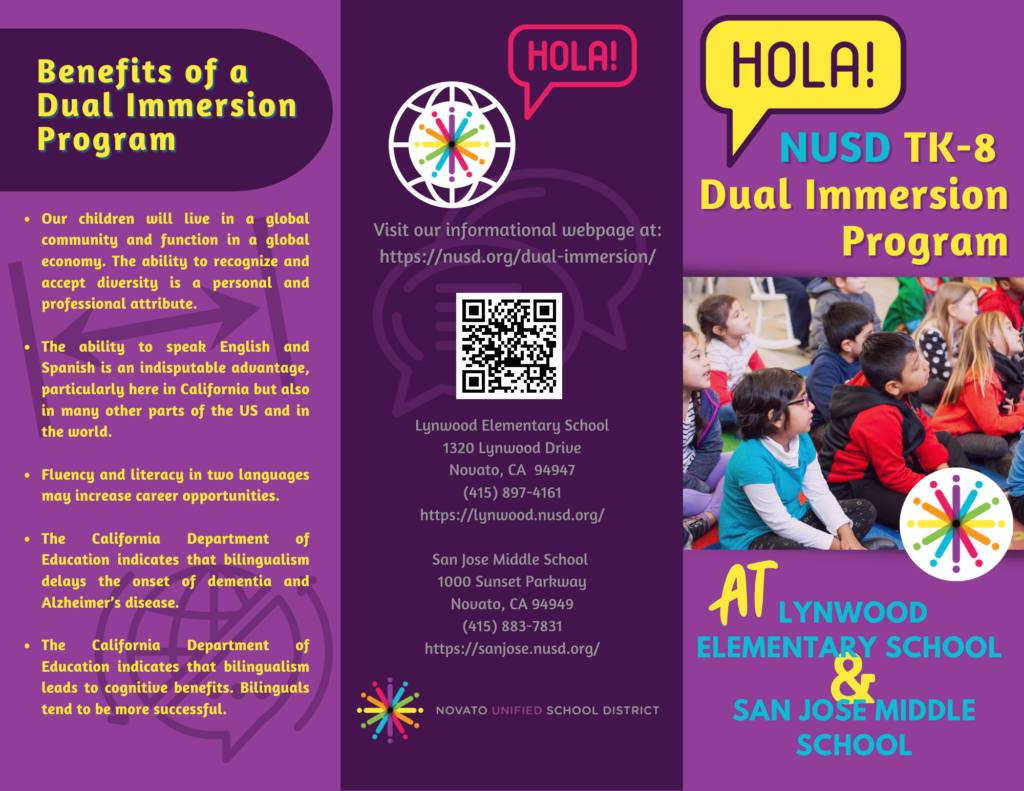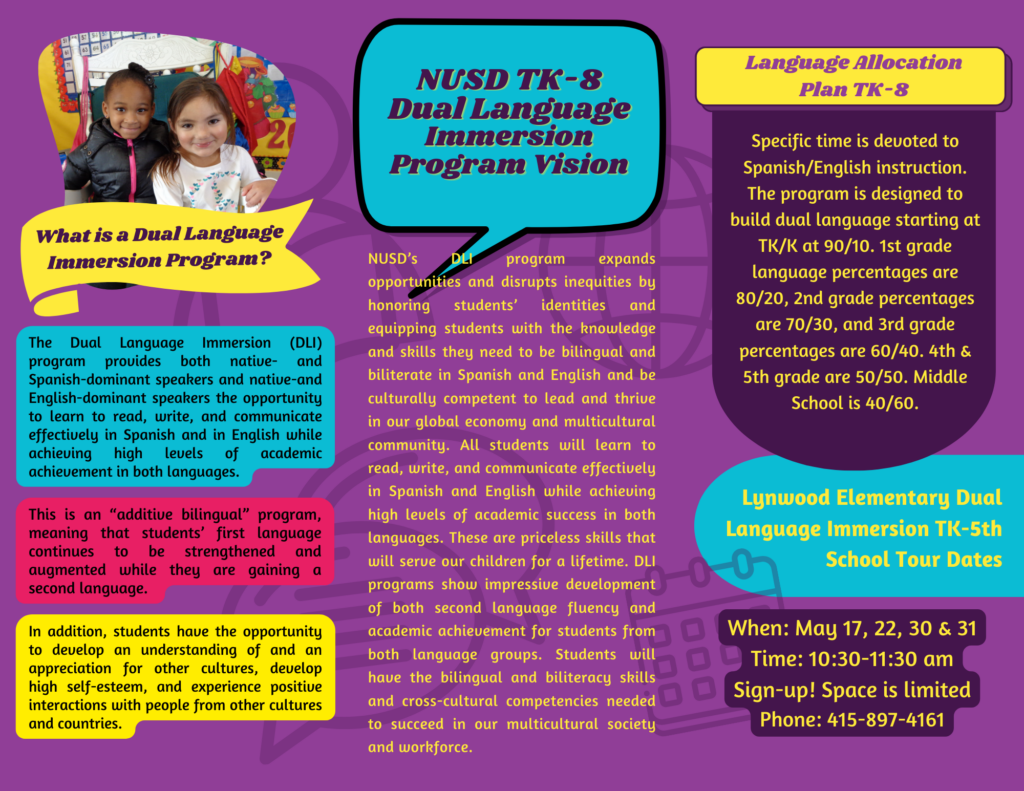


NUSD TK-8 Dual Immersion Program
The Dual Language Immersion (DLI) program provides both native- and Spanish-dominant speakers and native- and English-dominant speakers the opportunity to learn to read, write, and communicate effectively in Spanish and in English while achieving high levels of academic achievement in both languages. This is an “additive bilingual” program, meaning that students’ first language continues to be strengthened and augmented while they are gaining a second language. In addition, students have the opportunity to develop an understanding of and an appreciation for other cultures, develop high self-esteem, and experience positive interactions with people from other cultures and countries.
Participation in the DLI program begins in Transitional Kindergarten (TK) or kindergarten, and students remain in the program through 5th grade at a minimum and may continue into secondary in order to reach and maintain high levels of literacy and proficiency in both languages. Both Spanish-dominant and English-dominant students are placed in the same classroom. Ideally, 50% of the in each DLI classroom should be Spanish-dominant students, and the other 50% should be English-dominant students. Bilingual students may also be included in the DLI program. However, in any classroom configuration, Spanish-dominant speakers should make up no less than 30% and no more than 70% of the class, as they serve as strong models for the partner learners (the English-dominant speakers.)
The NUSD Dual Immersion Program at Lynwood will provide an enriched education, allowing each student to develop the knowledge and skills needed to become a productive and engaged member of our diverse global community.
We will honor our students’ languages and cultures as they learn together and:
- meet or exceed grade-level standards
- develop high levels of linguistic and academic proficiency in both Spanish and English
- become culturally competent, bilingual, and bi-literate
Staff, students, and families will hold high expectations for each member of our school community, work together to support each other, foster the development of our program, and celebrate our achievements.
Some of the benefits include:
- Greater cognitive flexibility
- Increased cultural competency
- Broader long-term employment options and earning potential
- Student achievement that meets or exceeds student performance in traditional programs
- Closing the achievement gap, especially for English Language Learners (ELLs)
- Strengthening the home language accelerates acquisition of a second (or third…) language
- ELLs’ English development outperforms ELLs in traditional or pull-out English language development.
- What the Research Says About Immersion. Williams, T., Center for Advanced Research on Language Acquisition.
- Bilingual Effects on Cognitive and Linguistic Development: Role of Language, Cultural Background, and Education. Barac, R. Bialystok, E., Child Dev. 2012 Mar; 83(2): 413–422.
- Flexibility in task switching by monolinguals and bilinguals. Wiseheart, M., Viswanathan, M., Bialystok, E., Biling (Camb Engl). 2016 Jan; 19(1): 141–146.2016.
NEWS
- Being bilingual rewires the fundamental structure of your brain Frida Garza, Quartz Media, Feb. 18, 2016
- A Kindergartner’s Year In a Mandarin-Immersion School (NPR)
- The Bilingual Advantage (The New York Times)
- Is there an Academic Advantage to Being Bilingual?(The Sundial)
- Your Mind on Language: How Bilingualism Boosts Your Brain(The Huffington Post)
- Speaking a Second Language May Change How You See the World (Science Magazine)
- Why Bilinguals Are Smarter (The New York Times)
- 5 Reasons to Love Dual Language Immersion Programs




